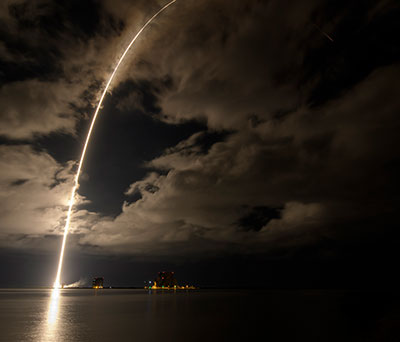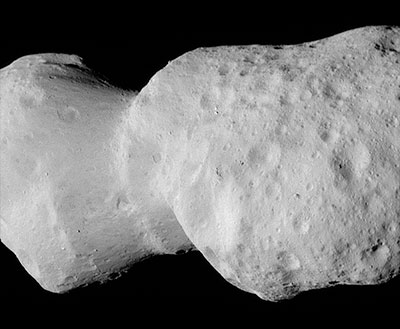 Space News space history and artifacts articles Messages space history discussion forums Sightings worldwide astronaut appearances Resources selected space history documents |
If you have previously registered, but forgotten your password, click here.
| ||||||||
| Robert Pearlman | Lucy will mark the 100th launch from Complex 41 at the Cape Canaveral Space Force Station (formerly Air Force Station). | |||||||
| Robert Pearlman | NASA/Bill Ingalls photo A United Launch Alliance Atlas V rocket with the Lucy spacecraft aboard is seen in this 2 minute and 30 second exposure photograph as it launches from Space Launch Complex 41, Saturday, Oct. 16, 2021, at Cape Canaveral Space Force Station in Florida.  | |||||||
| Robert Pearlman | On Sunday (Oct. 16) at 7:04 a.m. EDT, the Lucy spacecraft will fly by Earth, passing a mere 220 miles (350 kilometers) above the planet. At around 6:55 a.m. EDT, Lucy will first be visible to observers on the ground in Western Australia (6:55 p.m. for those observers). Lucy will quickly pass overhead, clearly visible to the naked eye for a few minutes before disappearing at 7:02 a.m. EDT as the spacecraft passes into the Earth’s shadow. Lucy will continue over the Pacific Ocean in darkness and emerge from the Earth's shadow at 7:26 a.m. EDT. If the clouds cooperate, sky watchers in the western United States should be able to get a view of Lucy with the aid of binoculars. | |||||||
| Blackarrow | The 'Lucy' spacecraft has now made its second asteroid flyby, having carried out observations of main-belt asteroid Donaldjohanson from as close as 600 miles on Monday 21st April. Initial images show a twin-lobe body with an odd neck. I can't speak for the NASA controllers, but the image quality exceeded my expectations, and more will be available soon. | |||||||
| Blackarrow | The last information about the Lucy encounter with asteroid Donaldjohanson was on or about 23rd April. Actually, the last information on NASA's "Lucy" website was on 20th April, showing a brief video of the encounter. This didn't actually show the entire asteroid. I have hunted high and low online but have found precisely nothing about the encounter other than that brief video. No still images, no data on the encounter, nothing. It's as if a total news blackout has been implemented. I have two questions:
| |||||||
| denali414 | Not sure if this helps, but more images and 3D. | |||||||
| Blackarrow | No, that's just the same 5-second video that has been available since April 21st. Since then, there has been absolutely nothing else. No additional images, no news, nothing. Imagine it's 1989: Voyager 2 has just flown past Neptune. NASA releases two or three images, then there is a total news black-out. Three months after the encounter the public has seen nothing since those first two or three images. I think that would have been considered very odd indeed. So why the total news blackout after that 5-second asteroid encounter video? I hasten to add that I'm not suggesting anything sinister: no "alien base on Donaldjohanson" nonsense. I just want to know why NASA considers it either (a) unnecessary; or (b) undesirable to release any more information about this asteroid encounter. If you Google "NASA Lucy Mission" you will be treated to a report about the encounter as a future event that has not yet happened. How does NASA expect to get young people interested in space exploration if it refuses to tell people what its spacecraft are doing? I know they have major budgetary problems, but surely someone can post a simple update with the latest details of the encounter? Does anyone have any contacts in NASA who can explain this news blackout? | |||||||
